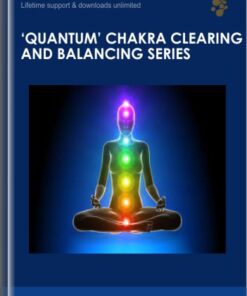Innovations in Trauma Therapy Conference – Bessel Van der Kolk , David Feinstein & others
Question and Answer
What is We?
We is have gathered an outstanding faculty to present the theory and application of innovative treatment models..
How does We have gathered?
We have gathered an outstanding faculty to present the theory and application of innovative treatment models.
What is Innovations?
Innovations is Purchase in Trauma Therapy Conference - Bessel Van der Kolk , David Feinstein & others courses at here with PRICE $24.99 $ The Innovations In Trauma Therapy Conference 2014 features expert presenters teaching unique and innovative treatments..
How does Innovations Purchase?
Purchase Innovations in Trauma Therapy Conference - Bessel Van der Kolk , David Feinstein & others courses at here with PRICE $24.99 $ The Innovations In Trauma Therapy Conference 2014 features expert presenters teaching unique and innovative treatments.
What is We?
We is have gathered an outstanding faculty to present the theory and application of innovative treatment models..
How does We have gathered?
We have gathered an outstanding faculty to present the theory and application of innovative treatment models.
What is Interactive dialogue?
Interactive dialogue is and clinical demonstrations make this event both a valuable and a unique learning experience for professionals around the world..
How does Interactive dialogue make?
Interactive dialogue and clinical demonstrations make this event both a valuable and a unique learning experience for professionals around the world.
What is We?
We is are excited to share this knowledge and increase our collective ability to provide excellent care..
How does We are excited?
We are excited to share this knowledge and increase our collective ability to provide excellent care.
What is the principles of “bottom-up” processing?
the principles of “bottom-up” processing is Apply to resolving traumatic experiences Recognizing differences between “top-down” and “bottom-up” processing Differentiate between the multiple systems involved in explicit and implicit memory Analyzing and describing the basic energy states of shutdown, hyperarousal and social engagement..
How does the principles of “bottom-up” processing Apply?
Apply the principles of “bottom-up” processing to resolving traumatic experiences Recognizing differences between “top-down” and “bottom-up” processing Differentiate between the multiple systems involved in explicit and implicit memory Analyzing and describing the basic energy states of shutdown, hyperarousal and social engagement.
What is self-regulation Accessing?
self-regulation Accessing is In restoring the felt-sense experience of the “deep-self” in stabilizing traumatic processing Delineate current diagnostic criteria for Developmental Trauma Disorder Show how and why Dissociative Disorders should not be treated with the types of exposure techniques used for PTSD Flashbacks Define and describe “time capsules” as related to DID Describe the use of at least two hypnotic techniques to treat DID Describe the relationship between DID and hypnotic capacity Define energy psychology Identify EFT and TFT as two forms of energy psychology Describe a physical intervention used in energy psychology protocols Discuss the difference between energy psychology as a self-help approach and as a clinical intervention explain that acupoint tapping reduces threat arousal in the amygdala Define the Dual Attunement Frame (relational and Neurobiological attunement together) in Brainspotting Describe Outside Window, Inside Window Brainspotting and Gazespotting and how they are determined Discuss how the processing in Brainspotting is facilitated by observing the focused, sequential, internal experience of the client Name one physiological sign of likely PTSD Identify a life stage associated with the subsequent development of PTSD after experiencing a Category A traumatic event Name at least one clinician of the post WWII period identified with the development of the PTSD diagnosis Define secondary traumatization Session 1: Conference Introduction (Maggie Phillips, Ph.D., and Steve Frankel, Ph.D., J.D., ABPP (Clinical & Forensic)).
How does self-regulation Accessing restoring?
In restoring self-regulation Accessing the felt-sense experience of the “deep-self” in stabilizing traumatic processing Delineate current diagnostic criteria for Developmental Trauma Disorder Show how and why Dissociative Disorders should not be treated with the types of exposure techniques used for PTSD Flashbacks Define and describe “time capsules” as related to DID Describe the use of at least two hypnotic techniques to treat DID Describe the relationship between DID and hypnotic capacity Define energy psychology Identify EFT and TFT as two forms of energy psychology Describe a physical intervention used in energy psychology protocols Discuss the difference between energy psychology as a self-help approach and as a clinical intervention explain that acupoint tapping reduces threat arousal in the amygdala Define the Dual Attunement Frame (relational and Neurobiological attunement together) in Brainspotting Describe Outside Window, Inside Window Brainspotting and Gazespotting and how they are determined Discuss how the processing in Brainspotting is facilitated by observing the focused, sequential, internal experience of the client Name one physiological sign of likely PTSD Identify a life stage associated with the subsequent development of PTSD after experiencing a Category A traumatic event Name at least one clinician of the post WWII period identified with the development of the PTSD diagnosis Define secondary traumatization Session 1: Conference Introduction (Maggie Phillips, Ph.D., and Steve Frankel, Ph.D., J.D., ABPP (Clinical & Forensic))
What is Session 2:?
Session 2: is How the Living, Sensing Body Resolves Trauma, Establishes Safety and Restores Resilience: Clinical Implications (Peter Levine, Ph.D.) Therapeutic work with traumatized individuals, and those suffering from deeply distressing emotions, can be greatly facilitated by utilizing bottom-up (body awareness) in concert with top-down (“psychological”) processing. We find that a potent fulcrum for long-term change resides in accessing innate body movements and sensations associated with the “true-self.” Then from that potent and enduring platform, individuals can be guided gradually to touch into, and transform, traumatic experiences..
How does Session 2: traumatized?
Session 2: How the Living, Sensing Body Resolves Trauma, Establishes Safety and Restores Resilience: Clinical Implications (Peter Levine, Ph.D.) Therapeutic work with traumatized individuals, and those suffering from deeply distressing emotions, can be greatly facilitated by utilizing bottom-up (body awareness) in concert with top-down (“psychological”) processing. We find that a potent fulcrum for long-term change resides in accessing innate body movements and sensations associated with the “true-self.” Then from that potent and enduring platform, individuals can be guided gradually to touch into, and transform, traumatic experiences.
What is Effective therapy helps people?
Effective therapy helps people is move from shutdown (numbness) and hyperarousal (overwhelm) to “healthy aggression,” safety, and the capacity for intimate relationship..
How does Effective therapy helps people move?
Effective therapy helps people move from shutdown (numbness) and hyperarousal (overwhelm) to “healthy aggression,” safety, and the capacity for intimate relationship.
What is Session 3:?
Session 3: is Somatic Approaches to Ego-State Therapy: Using the Body’s Organic Intelligence to Resolve Traumatic Conflicts of the Self (Maggie Phillips, Ph.D.) This presentation presents a new use of Somatic Experiencing to help heal the fragmentation often caused by dissociation and personality division..
How does Session 3: presents?
Session 3: Somatic Approaches to Ego-State Therapy: Using the Body’s Organic Intelligence to Resolve Traumatic Conflicts of the Self (Maggie Phillips, Ph.D.) This presentation presents a new use of Somatic Experiencing to help heal the fragmentation often caused by dissociation and personality division.
What is Ego-State Therapy?
Ego-State Therapy is is one of the primary approaches used to heal inner conflict, dissociation, and other posttraumatic symptoms..
How does Ego-State Therapy is?
Ego-State Therapy is one of the primary approaches used to heal inner conflict, dissociation, and other posttraumatic symptoms.
What is Somatic Experiencing?
Somatic Experiencing is Combining with Ego-State Therapy provides more depth and permanence to this process, promoting healing from the bottom level up, assisting with self-regulation, and managing and promoting sensorimotor integration through completed somatic patterns..
How does Somatic Experiencing Combining?
Combining Somatic Experiencing with Ego-State Therapy provides more depth and permanence to this process, promoting healing from the bottom level up, assisting with self-regulation, and managing and promoting sensorimotor integration through completed somatic patterns.
What is The video demonstration?
The video demonstration is that illustrates this approach features an adult client struggling to find balance between autonomy and connection in her life..
How does The video demonstration illustrates?
The video demonstration that illustrates this approach features an adult client struggling to find balance between autonomy and connection in her life.
What is a somatic approach?
a somatic approach is Using to Ego-State Therapy, she resolved many of the physical, emotional, and spiritual conflicts related to a near-drowning experience at the age of four..
How does a somatic approach Using?
Using a somatic approach to Ego-State Therapy, she resolved many of the physical, emotional, and spiritual conflicts related to a near-drowning experience at the age of four.
What is The discussion?
The discussion is following the video accents the strategies that helped complete somatic patterns, facilitated emotional regulation and promoted embodied personality integration..
How does The discussion following?
The discussion following the video accents the strategies that helped complete somatic patterns, facilitated emotional regulation and promoted embodied personality integration.
What is Session 4:?
Session 4: is Developmental Trauma Disorder: The Nexus of Attachment, Trauma and Brain (Bessel van der Kolk, M.D.) Every year, there are ten times as many children in the US reported to be victims of domestic violence, neglect and abuse than combat soldiers from Iraq and Afghanistan diagnosed with PTSD..
How does Session 4: are?
Session 4: Developmental Trauma Disorder: The Nexus of Attachment, Trauma and Brain (Bessel van der Kolk, M.D.) Every year, there are ten times as many children in the US reported to be victims of domestic violence, neglect and abuse than combat soldiers from Iraq and Afghanistan diagnosed with PTSD.
What is these children?
these children is However, live in a diagnostic void because the current DSM-IV conceptualization of PTSD does not reflect the symptoms experienced by the vast majority of these children..
How does these children live?
However, these children live in a diagnostic void because the current DSM-IV conceptualization of PTSD does not reflect the symptoms experienced by the vast majority of these children.
What is trauma?
trauma is For when occurs within the context of what is supposed to be a safe interpersonal attachment, the trauma picture takes on a profoundly different shape and has profound effects on brain development and the formation of the self..
How does trauma occurs?
For when trauma occurs within the context of what is supposed to be a safe interpersonal attachment, the trauma picture takes on a profoundly different shape and has profound effects on brain development and the formation of the self.
What is children?
children is So, instead, abused and neglected receive such widely disparate diagnoses as bipolar disorder, conduct disorder, ADHD, and other anxiety disorders..
How does children abused?
So, instead, abused and neglected children receive such widely disparate diagnoses as bipolar disorder, conduct disorder, ADHD, and other anxiety disorders.
What is these diagnoses?
these diagnoses is All of are etiologically unrelated to trauma and lead to pharmacological and behavioral control at the expense of dealing with the fear, shame, terror and rage that derive from real threats to these children’s survival..
How does these diagnoses are etiologically unrelated?
All of these diagnoses are etiologically unrelated to trauma and lead to pharmacological and behavioral control at the expense of dealing with the fear, shame, terror and rage that derive from real threats to these children’s survival.
What is The lack?
The lack is of proper diagnosis also has profound implications on insurance reimbursement, treatment development and clinical research..
How does The lack also has?
The lack of proper diagnosis also has profound implications on insurance reimbursement, treatment development and clinical research.
What is these children?
these children is Thus are condemned to receive treatments that are likely to be ineffective and therefore put them at risk to grow up to be unproductive, expensive, potentially dangerous, and long-suffering members of our society..
How does these children are condemned?
Thus these children are condemned to receive treatments that are likely to be ineffective and therefore put them at risk to grow up to be unproductive, expensive, potentially dangerous, and long-suffering members of our society.
What is Session 5:?
Session 5: is The Polyvagal Theory: Demystifying the Body’s Response to Trauma (Stephen Porges, Ph.D.) This presentation will focus on the restorative power of understanding the adaptive function of stress reactions as an important adjunct to treatment..
How does Session 5: will focus?
Session 5: The Polyvagal Theory: Demystifying the Body’s Response to Trauma (Stephen Porges, Ph.D.) This presentation will focus on the restorative power of understanding the adaptive function of stress reactions as an important adjunct to treatment.
What is the biobehavioral features of stress reactions,?
the biobehavioral features of stress reactions, is By deconstructing both client and therapist are better informed in their journey to a successful outcome..
How does the biobehavioral features of stress reactions, deconstructing?
By deconstructing the biobehavioral features of stress reactions, both client and therapist are better informed in their journey to a successful outcome.
What is The presentation?
The presentation is will emphasize the role of “neuroception,” a neurophysiological process through which our nervous system evaluates risk in the environment, without awareness and often independent of a cognitive narrative. Trauma may reset neuroception to protect us from others when there is no “real” danger..
How does The presentation will emphasize?
The presentation will emphasize the role of “neuroception,” a neurophysiological process through which our nervous system evaluates risk in the environment, without awareness and often independent of a cognitive narrative. Trauma may reset neuroception to protect us from others when there is no “real” danger.
What is The presentation?
The presentation is will inform the therapist about how to assess the deleterious consequences of trauma-related experiences by understanding the adaptive psychological, behavioral, and health features of each of the three “Polyvagal” visceral response strategies (i.e., social engagement, mobilization, and immobilization ) and how successful therapeutic interventions promote a neuroception of safety with the consequential improvements in mental and physical health by enabling mobilization and immobilization to occur without fear. Session 6: Opening “Time Capsules”: A Hypnotic Approach to the Treatment of DID (Steve Frankel, Ph.D., J.D., ABPP (Clinical & Forensic)) This presentation will focus on a 73 year old woman whom I have been treating for over 20 years..
How does The presentation will inform?
The presentation will inform the therapist about how to assess the deleterious consequences of trauma-related experiences by understanding the adaptive psychological, behavioral, and health features of each of the three “Polyvagal” visceral response strategies (i.e., social engagement, mobilization, and immobilization ) and how successful therapeutic interventions promote a neuroception of safety with the consequential improvements in mental and physical health by enabling mobilization and immobilization to occur without fear. Session 6: Opening “Time Capsules”: A Hypnotic Approach to the Treatment of DID (Steve Frankel, Ph.D., J.D., ABPP (Clinical & Forensic)) This presentation will focus on a 73 year old woman whom I have been treating for over 20 years.
What is She?
She is has done exceedingly well in treatment, as evidenced by her level of functioning..
How does She has?
She has done exceedingly well in treatment, as evidenced by her level of functioning.
What is she?
she is However, suffers from a substantial number of child parts who are “stuck in time capsules.” They are in flashbacks..
How does she suffers?
However, she suffers from a substantial number of child parts who are “stuck in time capsules.” They are in flashbacks.
What is Their situations?
Their situations is significantly impact her personal functioning..
How does Their situations significantly impact?
Their situations significantly impact her personal functioning.
What is this session,?
this session, is In several alters emerge, are engaged utilizing hypnotic techniques, and show immediate benefit from these interventions..
How does this session, emerge,?
In this session, several alters emerge, are engaged utilizing hypnotic techniques, and show immediate benefit from these interventions.
What is Session 7:?
Session 7: is Energy Psychology in Treating Trauma-Based Conditions (David Feinstein, Ph.D.) Tapping on selected acupuncture points while targeted scenes are mentally activated can eliminate maladaptive fear responses to traumatic memories and related cues..
How does Session 7: scenes?
Session 7: Energy Psychology in Treating Trauma-Based Conditions (David Feinstein, Ph.D.) Tapping on selected acupuncture points while targeted scenes are mentally activated can eliminate maladaptive fear responses to traumatic memories and related cues.
What is energy psychology,?
energy psychology, is Known as research supports the efficacy of the approach for alleviating PTSD and other difficult conditions with surprising speed and power..
How does energy psychology, Known?
Known as energy psychology, research supports the efficacy of the approach for alleviating PTSD and other difficult conditions with surprising speed and power.
What is Disaster response teams,?
Disaster response teams, is from Rwanda to Newtown, have been using it with striking success..
How does Disaster response teams, have been using?
Disaster response teams, from Rwanda to Newtown, have been using it with striking success.
What is Clinicians new?
Clinicians new is to the method are routinely impressed by the way that incorporating tapping protocols into the modalities they are already using boosts their effectiveness..
How does Clinicians new are routinely impressed?
Clinicians new to the method are routinely impressed by the way that incorporating tapping protocols into the modalities they are already using boosts their effectiveness.
What is This seminar?
This seminar is will show brief video clips of four combat veterans prior to treatment, during treatment, and post-treatment, and a longer session that illustrates the technique in greater detail with a trauma-induced phobia..
How does This seminar will show?
This seminar will show brief video clips of four combat veterans prior to treatment, during treatment, and post-treatment, and a longer session that illustrates the technique in greater detail with a trauma-induced phobia.
What is Discussion?
Discussion is will include clinical considerations in using energy psychology and possible mechanisms of action..
How does Discussion will include?
Discussion will include clinical considerations in using energy psychology and possible mechanisms of action.
What is Session 8:?
Session 8: is Brainspotting: Accessing the Subcortical Brain through Your Visual Field to Resolve Trauma (David Grand, Ph.D.) Brainspotting may be viewed from several perspectives..
How does Session 8: may be viewed?
Session 8: Brainspotting: Accessing the Subcortical Brain through Your Visual Field to Resolve Trauma (David Grand, Ph.D.) Brainspotting may be viewed from several perspectives.
What is It?
It is is a positive, client centered approach which develops and holds the dual attunement frame to promote the client’s innate self-healing capacities..
How does It is?
It is a positive, client centered approach which develops and holds the dual attunement frame to promote the client’s innate self-healing capacities.
What is Brainspotting?
Brainspotting is is also a phenomenological approach where the therapist observes every aspect of the client’s experience with curiosity, and without imposing any judgment or point of view..
How does Brainspotting is also?
Brainspotting is also a phenomenological approach where the therapist observes every aspect of the client’s experience with curiosity, and without imposing any judgment or point of view.
What is brainspotting?
brainspotting is Third, is a creative, integrative model which invites the therapist to make use of their own wisdom and previous training..
How does brainspotting is?
Third, brainspotting is a creative, integrative model which invites the therapist to make use of their own wisdom and previous training.
What is Brainspotting?
Brainspotting is can be applied to performance and creativity expansion as well as to trauma..
How does Brainspotting can be applied?
Brainspotting can be applied to performance and creativity expansion as well as to trauma.
What is Session 9:?
Session 9: is An Integrative Approach to Stabilization with Dissociative Clients (Kathy Steele, MN, CS) This presentation will offer an integrative approach to stabilization in clients with dissociation, ranging from Complex PTSD, DDNOS, and DID..
How does Session 9: will offer?
Session 9: An Integrative Approach to Stabilization with Dissociative Clients (Kathy Steele, MN, CS) This presentation will offer an integrative approach to stabilization in clients with dissociation, ranging from Complex PTSD, DDNOS, and DID.
What is childhood abuse?
childhood abuse is Since and neglect interfere with normal development across wide areas of functioning, clients are generally not yet able to integrate traumatic memories..
How does childhood abuse neglect?
Since childhood abuse and neglect interfere with normal development across wide areas of functioning, clients are generally not yet able to integrate traumatic memories.
What is they?
they is Instead suffer from flashbacks, intrusions from, or switching to, child parts that are overwhelmed and not oriented to the present, have serious unresolved inner conflicts, and struggle with daily life..
How does they suffer?
Instead they suffer from flashbacks, intrusions from, or switching to, child parts that are overwhelmed and not oriented to the present, have serious unresolved inner conflicts, and struggle with daily life.
What is early treatment?
early treatment is Thus, is most effective when it focuses on supporting the client to overcome developmental deficits, using a phase-oriented, relational model..
How does early treatment is most?
Thus, early treatment is most effective when it focuses on supporting the client to overcome developmental deficits, using a phase-oriented, relational model.
What is helpful models?
helpful models is There are many for treating trauma, but many of them do not include ways to address the underlying dissociative organization of the client’s inner experience..
How does helpful models are?
There are many helpful models for treating trauma, but many of them do not include ways to address the underlying dissociative organization of the client’s inner experience.
What is We?
We is will focus on an eclectic, integrative approach to stabilize dissociative clients, which incorporates many therapeutic approaches I have found helpful over 30 years of experience..
How does We will focus?
We will focus on an eclectic, integrative approach to stabilize dissociative clients, which incorporates many therapeutic approaches I have found helpful over 30 years of experience.
What is I?
I is use a wide variety of relational, cognitive, mindfulness, affective, somatic, ego state, psychodynamic, EMDR, and hypnotic techniques..
How does I use?
I use a wide variety of relational, cognitive, mindfulness, affective, somatic, ego state, psychodynamic, EMDR, and hypnotic techniques.
What is A demonstration?
A demonstration is of some of these techniques and their positive effects will be shown in a video of a session with a client who had DDNOS..
How does A demonstration will be shown?
A demonstration of some of these techniques and their positive effects will be shown in a video of a session with a client who had DDNOS.
What is Session 10:?
Session 10: is Energy Psychology Treatment for PTSD: Evidence, Clinical Application, and Cautions (Dawson Church, Ph.D.) Studies published in the past few years have shown that energy psychology techniques such as EFT (Emotional Freedom Techniques) and TFT (Thought Field Therapy) meet APA Division 12 (Clinical Psychology) criteria as “empirically validated treatments” for PTSD. Previously, APA reviews had identified PTSD as a “treatment-resistant” condition that often worsens over time as neural plasticity reinforces the pathways in the brain that conduct the signals of emotional trauma..
How does Session 10: published?
Session 10: Energy Psychology Treatment for PTSD: Evidence, Clinical Application, and Cautions (Dawson Church, Ph.D.) Studies published in the past few years have shown that energy psychology techniques such as EFT (Emotional Freedom Techniques) and TFT (Thought Field Therapy) meet APA Division 12 (Clinical Psychology) criteria as “empirically validated treatments” for PTSD. Previously, APA reviews had identified PTSD as a “treatment-resistant” condition that often worsens over time as neural plasticity reinforces the pathways in the brain that conduct the signals of emotional trauma.
What is The evidence?
The evidence is from these recent clinical trials indicates that energy psychology may efficiently remediate clinical levels of PTSD in treatment time frames ranging from 4 to 10 sessions..
How does The evidence indicates?
The evidence from these recent clinical trials indicates that energy psychology may efficiently remediate clinical levels of PTSD in treatment time frames ranging from 4 to 10 sessions.
What is This presentation?
This presentation is reviews the evidence in the context of the APA criteria..
How does This presentation reviews?
This presentation reviews the evidence in the context of the APA criteria.
What is It?
It is then presents clinical case histories, discusses the physiological mechanisms at work, such as reduced levels of stress hormones like cortisol and reduced levels of brain waves such as high beta, identifies comorbidities such as depression and anxiety that improve after successful PTSD treatment, and suggests ways in which these therapies may be applied in settings such as Veterans Administration hospitals, managed health care plans, and outpatient clinics..
How does It presents?
It then presents clinical case histories, discusses the physiological mechanisms at work, such as reduced levels of stress hormones like cortisol and reduced levels of brain waves such as high beta, identifies comorbidities such as depression and anxiety that improve after successful PTSD treatment, and suggests ways in which these therapies may be applied in settings such as Veterans Administration hospitals, managed health care plans, and outpatient clinics.
What is Session 11:?
Session 11: is Using Ochberg’s Counting Method as a Critical Element of Post-traumatic Therapy (Frank Ochberg, M.D.) The signature symptom of PTSD is the trauma memory that bursts into consciousness, whether it is as intense as a full-blown flashback or as insidious as the odor of a rapist’s aftershave..
How does Session 11: is?
Session 11: Using Ochberg’s Counting Method as a Critical Element of Post-traumatic Therapy (Frank Ochberg, M.D.) The signature symptom of PTSD is the trauma memory that bursts into consciousness, whether it is as intense as a full-blown flashback or as insidious as the odor of a rapist’s aftershave.
What is I?
I is prefer to establish a sense of collegiality and comfort before tackling the trauma memory, but sooner or later, survivor and therapist must look at the ghosts of the past together..
How does I prefer?
I prefer to establish a sense of collegiality and comfort before tackling the trauma memory, but sooner or later, survivor and therapist must look at the ghosts of the past together.
What is my long term Vietnam vet PTSD patients,?
my long term Vietnam vet PTSD patients, is One of Terry, agreed to have several of our sessions filmed as we approached the end of treatment..
How does my long term Vietnam vet PTSD patients, agreed?
One of my long term Vietnam vet PTSD patients, Terry, agreed to have several of our sessions filmed as we approached the end of treatment.
What is The film,?
The film, is produced by Victor Yalom, runs over two hours and is available for purchase..
How does The film, produced?
The film, produced by Victor Yalom, runs over two hours and is available for purchase.
What is I’ll?
I’ll is show a short and a long excerpt, illustrating a general approach to treatment and a detailed discussion of “Ochberg’s Counting Method.” The Counting Method helps reduce the intensity and the frequency of unwanted, intrusive traumatic memory..
How does I’ll show?
I’ll show a short and a long excerpt, illustrating a general approach to treatment and a detailed discussion of “Ochberg’s Counting Method.” The Counting Method helps reduce the intensity and the frequency of unwanted, intrusive traumatic memory.
What is Innovations?
Innovations is Get in Trauma Therapy Conference of author Bessel Van der Kolk , David Feinstein , David Grand , Dawson Church , Frank Ochberg , Kathy Steele , Maggie Phillips , Peter Levine , Stephen Porges & Steve Frankel only price 115$ Tag: Innovations in Trauma Therapy Conference - Bessel Van der Kolk , David Feinstein , David Grand , Dawson Church , Frank Ochberg , Kathy Steele , Maggie Phillips , Peter Levine , Stephen Porges & Steve Frankel Review..
How does Innovations Get?
Get Innovations in Trauma Therapy Conference of author Bessel Van der Kolk , David Feinstein , David Grand , Dawson Church , Frank Ochberg , Kathy Steele , Maggie Phillips , Peter Levine , Stephen Porges & Steve Frankel only price 115$ Tag: Innovations in Trauma Therapy Conference - Bessel Van der Kolk , David Feinstein , David Grand , Dawson Church , Frank Ochberg , Kathy Steele , Maggie Phillips , Peter Levine , Stephen Porges & Steve Frankel Review.
 Managing Patient Emergencies: Critical Care Skills Every Nurse Must Know - Dr. Paul Langlois
1 × $85.00
Managing Patient Emergencies: Critical Care Skills Every Nurse Must Know - Dr. Paul Langlois
1 × $85.00 'Quantum' Chakra Clearing and Balancing Series - Jonette Crowley
2 × $52.00
'Quantum' Chakra Clearing and Balancing Series - Jonette Crowley
2 × $52.00 Living the Legacy - Bob Proctor
1 × $250.00
Living the Legacy - Bob Proctor
1 × $250.00 Josue Pena - Instagram Mastery and Monetization
1 × $86.00
Josue Pena - Instagram Mastery and Monetization
1 × $86.00 Integrated Chronic Pain Management: Mental Health Interventions that Counteract Opiate Addiction - Robert Umlauf
1 × $85.00
Integrated Chronic Pain Management: Mental Health Interventions that Counteract Opiate Addiction - Robert Umlauf
1 × $85.00 5 Proven Ecommerce Scaling Tactics
1 × $49.00
5 Proven Ecommerce Scaling Tactics
1 × $49.00 Activate Your Diamond Blueprint - Diamond Energy - Jacqueline Joy
1 × $37.00
Activate Your Diamond Blueprint - Diamond Energy - Jacqueline Joy
1 × $37.00 “Done-For-You” Client-Attraction Teleseminar Package – Michelle Schubnel
1 × $80.00
“Done-For-You” Client-Attraction Teleseminar Package – Michelle Schubnel
1 × $80.00 Autoresponder Alchemy
2 × $34.00
Autoresponder Alchemy
2 × $34.00 100 Brain-Changing Mindfulness Techniques to Integrate Into Your Clinical Practice - Debra Burdick
1 × $84.00
100 Brain-Changing Mindfulness Techniques to Integrate Into Your Clinical Practice - Debra Burdick
1 × $84.00 Management of the Burn Patient - Dr. Paul Langlois
1 × $35.00
Management of the Burn Patient - Dr. Paul Langlois
1 × $35.00 1 Hour SEO | Become a Technical Marketer
1 × $40.00
1 Hour SEO | Become a Technical Marketer
1 × $40.00 Emerson - The Complete Combat Karambit
1 × $37.00
Emerson - The Complete Combat Karambit
1 × $37.00 2018 Geriatric Conference - Steven Atkinson
1 × $85.00
2018 Geriatric Conference - Steven Atkinson
1 × $85.00 [BIG Collection Real Estate] Real Estate Web Academy – Great Real Estate Giveaway
1 × $88.00
[BIG Collection Real Estate] Real Estate Web Academy – Great Real Estate Giveaway
1 × $88.00 10 Second Sexual Attraction 2.0 – Mehow
1 × $42.00
10 Second Sexual Attraction 2.0 – Mehow
1 × $42.00 'MAGNETIC INFLUENCE' - Magnet for Money, Charisma, Confidence! - Dani Johnson
1 × $63.00
'MAGNETIC INFLUENCE' - Magnet for Money, Charisma, Confidence! - Dani Johnson
1 × $63.00 15 Must-Have Mindfulness Techniques for Clinicians: Skills to Transform Your Treatment Plans for Stress, Depression, Anxiety, Anger, Trauma, Guilt and Shame - Terry Fralich
1 × $84.00
15 Must-Have Mindfulness Techniques for Clinicians: Skills to Transform Your Treatment Plans for Stress, Depression, Anxiety, Anger, Trauma, Guilt and Shame - Terry Fralich
1 × $84.00 007s Guide to a Womans Heart – Elite Training Bundle
1 × $35.00
007s Guide to a Womans Heart – Elite Training Bundle
1 × $35.00 10x Wealth and Business New – Brendon Burchard
1 × $123.00
10x Wealth and Business New – Brendon Burchard
1 × $123.00 Penguin Live 2: Pocket Mentalism - Richard Osterlind
1 × $20.00
Penguin Live 2: Pocket Mentalism - Richard Osterlind
1 × $20.00 Energy Enhancement Course : Sacred Dance
1 × $25.00
Energy Enhancement Course : Sacred Dance
1 × $25.00 12 Dimensions of Mastery (Lifebook Challenge)
1 × $92.00
12 Dimensions of Mastery (Lifebook Challenge)
1 × $92.00 Cardiopulmonary Therapy for the Rehab Professional: Therapeutic Interventions for All Aspects of Cardiac Care - From ICU to Outpatient - Cindy Bauer
1 × $84.00
Cardiopulmonary Therapy for the Rehab Professional: Therapeutic Interventions for All Aspects of Cardiac Care - From ICU to Outpatient - Cindy Bauer
1 × $84.00 Avoid Nursing Risk: Documentation, Practical Ethics & Legalities - Kathleen Kovarik & Rosale Lobo
1 × $105.00
Avoid Nursing Risk: Documentation, Practical Ethics & Legalities - Kathleen Kovarik & Rosale Lobo
1 × $105.00 Managing Geriatric Behaviors: Wandering, Aggression, Malnutrition and More - Steven Atkinson
1 × $35.00
Managing Geriatric Behaviors: Wandering, Aggression, Malnutrition and More - Steven Atkinson
1 × $35.00 10 Steps to Greater Confidence and Self-Esteem - Alexis Meads
10 Steps to Greater Confidence and Self-Esteem - Alexis Meads
 10-Minute Spiritual Vortex Clearing - Michael Davis Golzmane
$10.00
10-Minute Spiritual Vortex Clearing - Michael Davis Golzmane
$10.00 "Is Your Soul Allowing You To Heal?" -- All 7 Recordings in the Series (6 Hours of Audio Clearings)
"Is Your Soul Allowing You To Heal?" -- All 7 Recordings in the Series (6 Hours of Audio Clearings)
 101 Practical Strategies for the Treatment of GAD, Panic, OCD, Social Anxiety Disorder, Phobias and Insomnia - Jennifer L. Abel
101 Practical Strategies for the Treatment of GAD, Panic, OCD, Social Anxiety Disorder, Phobias and Insomnia - Jennifer L. Abel
 12 Minute Stage Crazy - Body of a Rock Star
12 Minute Stage Crazy - Body of a Rock Star